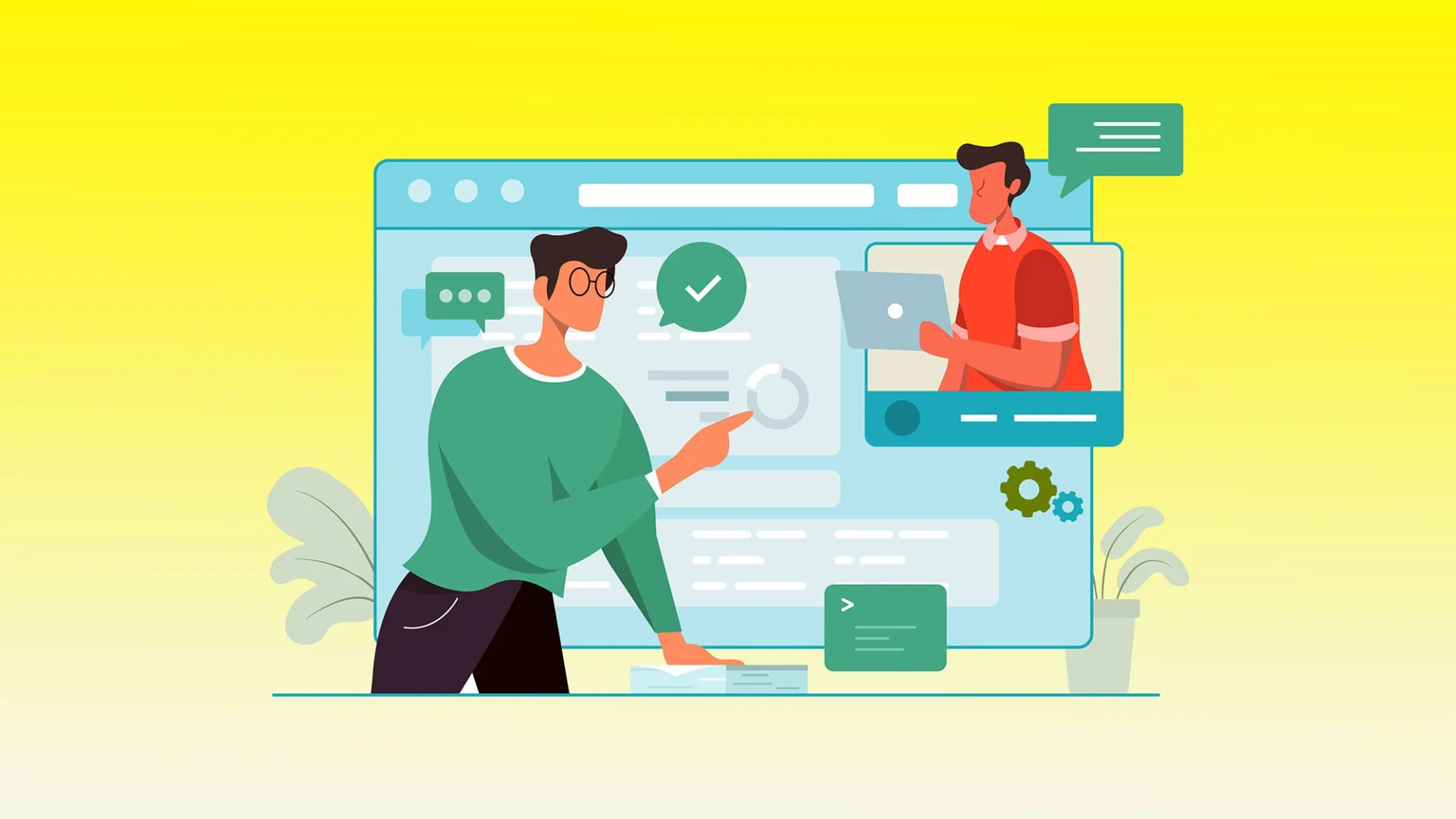Many companies struggle to bring people into their organization so they feel welcomed, are quickly integrated into the work, connected to their teammates, and set up to contribute immediately. Virtual working has added another level of complexity to that long-standing challenge but, with intention, it can be a great experience.
According to a recent study by Gallup, “only 12% of employees strongly agree their organization does a great job of onboarding new employees.” The traditional in-person experience can usually be described as a firehose where they give you a ton of information they want you to know including the company history, the logistics of navigating the office space, computer setup, and necessary paperwork to complete. For big companies, the HR representative conducting the process can be routine since they have likely done it numerous times so the novelty has worn off. But for the person starting the new job, it is a one-time experience and a chance to make their company introduction special.
The goal of a good onboarding is to help newcomers get settled and have the confidence to jump in as quickly as possible. Here are some things you can do to have a memorable virtual onboarding experience:
Phase 1: Pre-day 1
1A. Strong welcome upon acceptance. Once the candidate accepts the offer, you want to send the candidate a grand welcome. Some companies would receive a general welcome video from the CEO about the purpose and vision and the role they can contribute. As the manager, you should send a welcome email or have a call mentioning how excited you are for the person to join your ranks. You can even have a teammate or two send a message so they feel included from the beginning. If a company offers no outreach from the acceptance to the first day, that’s a red flag as they may deemphasize the relationship piece.
1B. Paperwork & Checklist. Every job has the necessary paperwork to complete, but instead of wasting time on day one finishing it, you should send it in advance electronically so you can hit the ground running on day one and not be bogged down with this tedious work that can be handled on your time. It is also nice to have a checklist of everything you need to do to be fully onboarded so you can track your progress along the way. GitHub has a massive checklist for the new employees and the things managers and the company need to complete with estimated deadlines.
1C. Introductions. It would be great for the new hire to send a 1 min. video or a paragraph introducing themselves with their picture, some information about them, and some questions to get to know more about them, such as how they spend their weekends, some of their favorite things to do, or a top value. There can even be a dedicated slack channel for intros to connect with people more easily and find common interests.
Phase 2: Intense Initial Period.
Executive Consultant Amanda Davis talks about onboarding happening in an initial intensive phase, maybe every day for the first week, and then a slower, more sporadic phase because onboarding is an ongoing process and not a one-time event. In this initial intense period, here are some aspects to consider:
2A. Receive Company Overview. Day one should be special and aim to excite and delight. It should include a macro overview of the company’s culture, philosophy, and customer impact stories. It should answer why the company exists and the good work meant to be done. The captured feeling should be energizing and motivating and make the person proud to be part of something great and important.
2B. Get Briefed on Role Overview. While you have learned about the role during the interview, this information can be even more specific, which will help you succeed at your job. You should be briefed on the critical work to be done, a picture of what great looks like, and key processes and practices that will help you thrive.
2C. Have a buddy or guide. This is somebody on your team who can answer questions about the company or day-to-day necessities for you to do your work. The buddy can be somebody there for a while to impart institutional knowledge faster or a recent hire who can navigate the onboarding process more quickly since they just went through it. Upon hire, it would be nice for the buddy to reach out to connect, share what they love about the company, and make it easy for the person to contact them for anything.
2D. Create a cross-functional cohort. If it is a larger organization, you will have clusters of people coming in frequently. You can make sure they are put into a cohort and there are opportunities to connect so they can know more people outside of the team and know others are going through the same experience as you.
2E. Receive a 1-page network map from your manager. It is vital to set up a strategic meeting with your manager where they will provide a matrix of the organization so you can have a better understanding of the inner workings and information flow. The manager should also provide a list of key internal people to connect with, stakeholders and business partners. It should have their top priorities and needs, the best way to communicate with them, and anything else you find helpful on that page. Once you walk through the grid and describe the connections, you will want to broker an introduction with some key people to grant credibility early on. There is a big difference between an employee pursuing a push method, where they seek to make contact with their coworkers over a pull method, where you, as manager, make the connection and find ways to pull them into work quickly. Companies who opted for this pull over push system were 8x more likely to be successful versus lower performing organizations because they created the conditions where the new hire got connected to key relationships quicker, had access to information and expertise, and had an opportunity to get pulled into work and contribute immediately, which led to a shorter cycle of productivity.
2F. Meet & greets. Once you have that list, you should set up appointments and begin your listening and relationship-building tour. The quality and effectiveness of your internal relationships will separate successful and productive employees from unproductive ones. When relationships are developed early on, the speed of work increases, and you can feel more included and empowered to contribute early on. It can also lead to career success because you can develop a network of trusted experts. You can also meet people that will help you get on bigger and more visible assignments.
Be sure to make the most of meet-and-greets by asking some strategic questions. You can set the frame by saying, “I would love to start with introductions and then learn about your key priorities, major pain points, and the work that excites you.” You can also generate enthusiasm for working together by asking about their ways of working and how you can best support them and their success. Good opportunity to tell others what you do and build your brand from the beginning. You want to think about mutual value exchanges and not just create a one-way relationship. As you leave the meeting, you can ask who else they think it would be helpful for me to connect with so you can extend the conversation with other strategic partners.
Phase 3:Ongoing supports
3A. 1 Month Connect. Having gone through a month of work, there are likely many more questions that have come up so having a cohort of new hires connect for relationship building, continued excitement, and doing a deeper dive to answer questions to learn even more about the company so they can contribute more robustly to the organization. The goal is to continue to educate and build excitement, so the new employees see themselves as direct contributors. It is also a two-way street because hearing some of their perceptions can offer great value to the team leaders about the company and onboarding processes. The managers do a great job spreading the learnings and aim to repeat them. You can have exercises where people have to share their understanding of their role’s purpose aligned with the company’s purpose; these stories can build valuable connections. These meetings can continue monthly for the first quarter.
3B. Connecting to a mentor. If the organization has a formal mentor program, it would be great for the person to be connected to a seasoned leader who can serve as a mentor to advance their career development to build that long-term investment. This can happen bi-yearly or quarterly depending on the bandwidth and can increase in frequency over time. Still, it is soothing knowing they have a dedicated mentor to help them succeed in their career.
Some companies treat onboarding as a routine one-day event. However, the most successful companies treat the onboarding experience as memorable and put in the necessary support along the journey before they even start during their intensive period, and in an ongoing sustainable fashion. When you intend to make the experience valuable, you will open the doors for workers to contribute more easily.
Quote of the day: “I truly believe that onboarding is an art. Each new employee brings with them a potential to achieve and succeed. To lose the energy of a new hire through poor onboarding is an opportunity lost.” -Sarah Wetzel, Director of Human Resources at Engage:BDR
Q: What are the best tips you can share about onboarding effectively? Comment and share below; we would love to hear from you!
The next blog in this series 11/11 will focus on hybrid work being the future.
As a leadership development and executive coach, I work with leaders to create enjoyable remote work experiences for themselves and their teams, contact me to explore this topic further.
What’s your onboarding experience?










